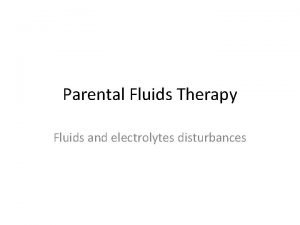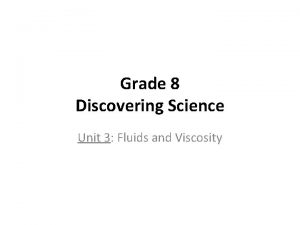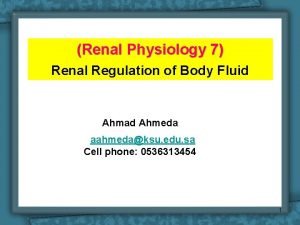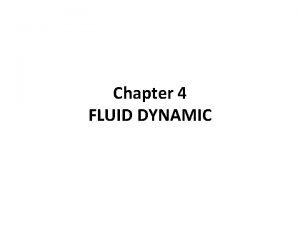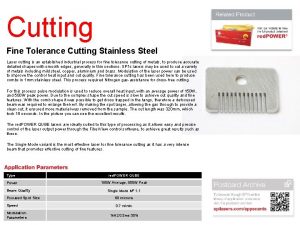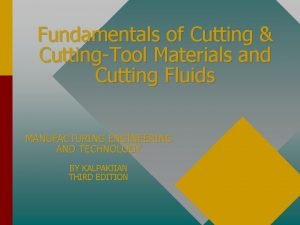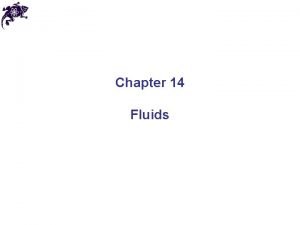Cutting Fluids Synthetic fluids Synthetic Fluids contain no















- Slides: 15

Cutting Fluids






Synthetic fluids • Synthetic Fluids contain no petroleum or mineral oil base. • They are formulated from alkaline inorganic and organic compounds along with additives for corrosion inhibition. • They are generally used in a diluted form (usual concentration = 3 to 10%). • Synthetic fluids often provide the best cooling performance among all cutting fluids.

Soluble oil fluids • Soluble oil fluids form an emulsion when mixed with water. • The concentrate consists of a base. • They are used in a diluted form (usual concentration = 3 to 10%) and provide good lubrication and heat transfer performance. • They are widely used in industry and are the least expensive among all cutting fluids.

Semi-synthetic fluids • Semi-synthetic fluids are essentially combination of synthetic and soluble oil fluids and have characteristics common to both types. • The cost and heat transfer performance of semi-synthetic fluids lie between those of synthetic and soluble oil fluids.

Rancidity • Bacteria break down additives to the chemicals and a foul smell results. • Prevention: keep machine and coolant clean

Cutting fluids are used to: • Wash away cutting chips. • Keep the cutting tool cool. • Reduce friction between cutting tool and workpiece. • Prolong tool life. • Improve surface finish.

Safety Hazards • • • Skin irritation or dermatitis. Staining the work piece especially for aluminium. Some give off hazardous odours (rancidity). Some create a mist or smoke making the work environment unsafe for the operator. Some leave an oily film on the work piece and require the use of cleaning solvents. Avoid splashes on skin, wash immediately, use skin barrier cream, Wear eye protection, Remove spilt cutting fluids from floor to prevent slipping, Renew cutting fluid to prevent rancidity, Cutting fluids need to be filtered and cleaned.

Dermatitis

Fluid Circulating System • Page 224

2009 HL Q 1 section A (b) Q. Outline two safety precautions to be observed when using cutting fluids in a machining process. A. Safety precautions when using cutting fluids: • Avoid splashes on skin, wash immediately, use skin barrier cream, • Wear eye protection, • Remove spilt cutting fluids from floor to prevent slipping, • Renew cutting fluid to prevent rancidity, • Cutting fluids need to be filtered and cleaned. (Any two) 3 + 2
 Sewing tools measuring tools
Sewing tools measuring tools Single point cutting tool drawing
Single point cutting tool drawing Non cutting instruments dentistry
Non cutting instruments dentistry Cutting instruments in operative dentistry
Cutting instruments in operative dentistry Cutting and non cutting dental instruments
Cutting and non cutting dental instruments Fluid mechanics
Fluid mechanics Parental fluid
Parental fluid Fluids
Fluids Density particles
Density particles Australian standards for texture modified foods and fluids
Australian standards for texture modified foods and fluids Regulation of body fluids
Regulation of body fluids No slip condition
No slip condition Buoyancyability
Buoyancyability Fluid equation
Fluid equation Hypotonic iv solution
Hypotonic iv solution Translation in fluids
Translation in fluids






